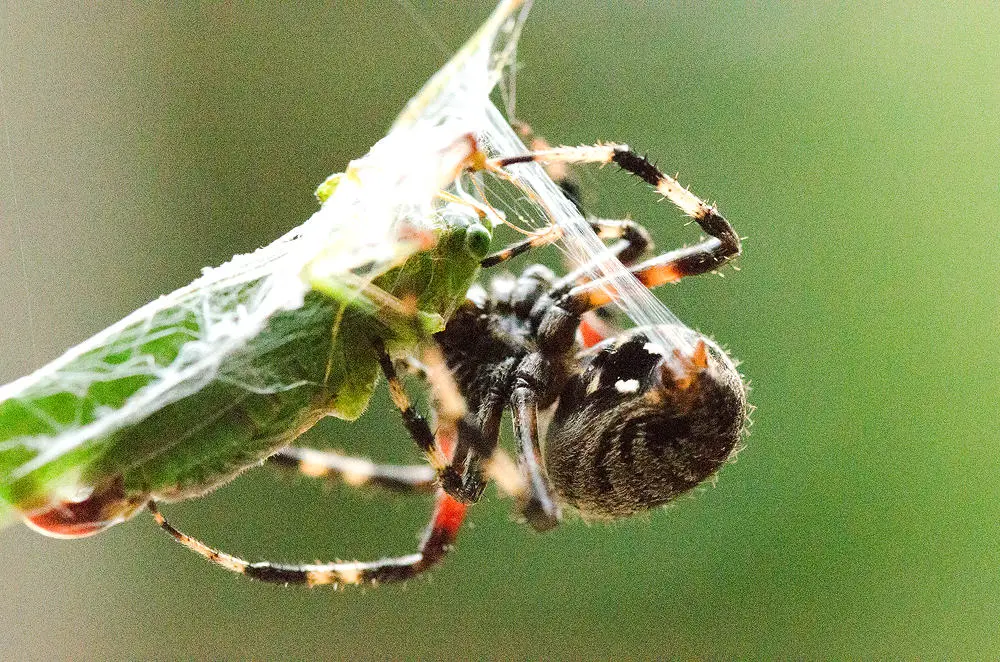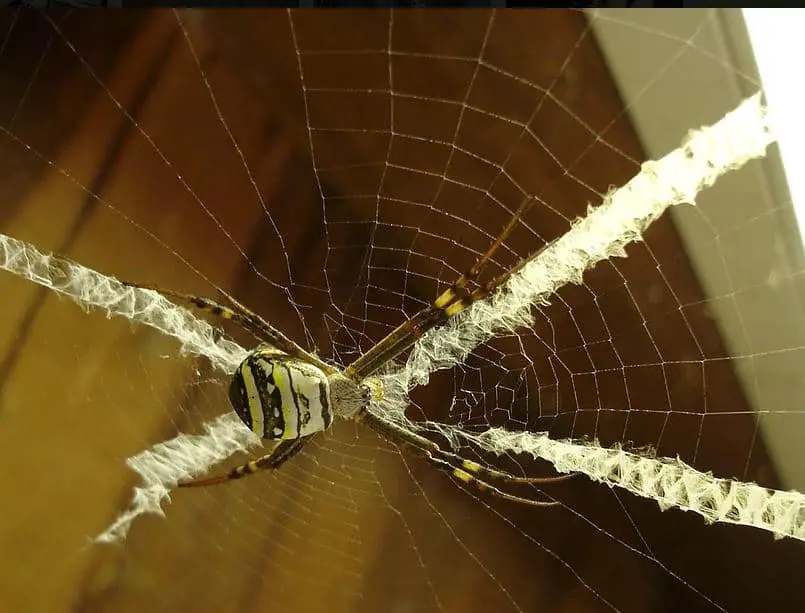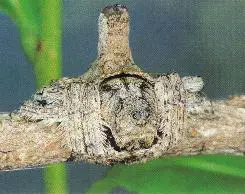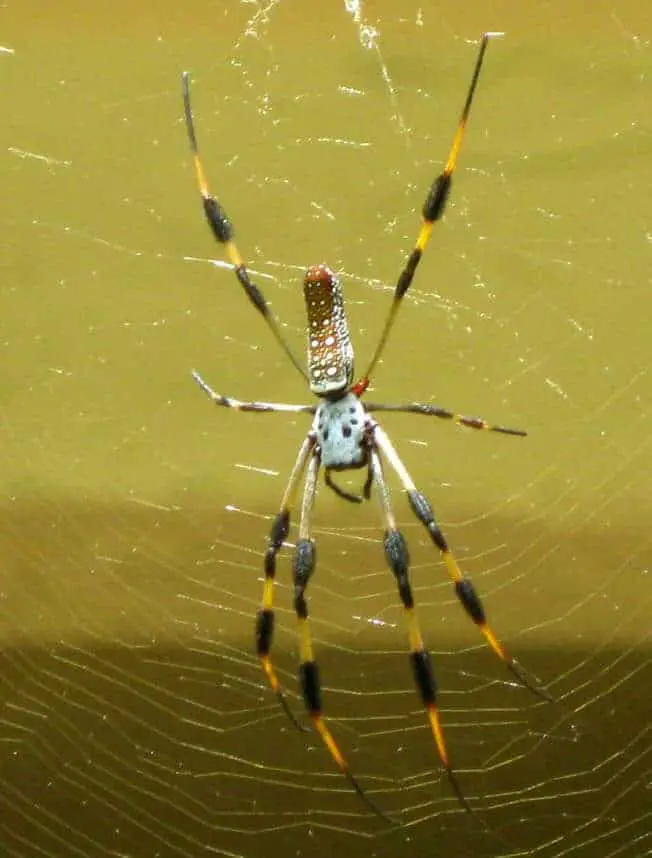There are many types of “Orb web” spiders, in fact any spider that spins an orb-shaped web may be classified as an “orb web weaver”. These include the Golden Orb-weaver spiders, St Andrew’s Cross spiders, Wraparound spiders and many garden spiders. The female Golden Orb-weaver may be as large as 45mm but the male is tiny, only about 6mm in length. These spiders often live in gardens and are harmless to man. A female’s web is made of strong golden silk which may spread up to 1m across and may snare a small bird or bat.
The wheel shaped orb web is the ultimate use of silk to catch prey. When a victim blunders into the web, it is snared by the silky threads. The spider, on feeling the vibrations, quickly trusses it up in silk to prevent it tearing the web.


A male Orb web spider may announce his presence to the female by plucking the strands of the web. Many small spiders such as Dewdrop spiders live on a Golden Orb-weavers web, eating any left-over insects that are too small for the Orb weaver. When a spider moves on the web, it holds the silk with claw-like bristles on its legs. Oil on its body prevents the spider from sticking to the web. Moths are somewhat protected from the webs also by scales on their bodies which prevent it sticking to the web. The garden spiders in these pictures, hide in the garden in the daytime and rest in their webs at night.
St Andrew’s Cross Spiders: The St Andrew’s Cross spider is harmless to man. The cross on which it rests adds strength to the web. If a female St Andrew’s Cross spider is disturbed, she will grasp her web and shake it vigorously.
Wraparound Spiders: Wraparound spiders have broad, flat abdomens. They also remain hidden during the day and spin orb webs at night to catch insects. The Wraparound spider in this picture has a turret shaped abdomen which looks like a broken off twig, to conceal it during the day.
Golden Orb Weavers (Nephila edulis FAMILY TETRAGNATHIDAE):
These are golden orb weavers, one of the largest spiders found in Australia. Their webs can be found hanging off sign posts, in or between trees and can even be spotted driving in a vehicle. The Golden Orb Web Spider is the largest spider species that we found in Brisbane. They are common in bushes and gardens.


They build very large and strong yellow silk orb webs which are vertical or slightly inclined. Under the sun their webs are golden in colour. The Golden Orb Web Spider is diurnal spider and the females are large while the males are only about 1/10 of the female size. The females can measure up to 45 mm while the smaller males measure only 6 mm. The male is often found in the web of the female.
The spider is brown to dark brown in colour. Their first, second and fourth pairs of legs have a brush of bristles on the tibia. The third pair of legs is the shortest with no brush. The abdomen is long oval shaped and is yellow with grey or brown patterns. The spider feeds on insects caught in the web.
The head is covered with silver hairs. The fangs are large and strong. The body is uniform yellow brown to silver grey. The legs are long and black with yellow joints and can span the width of an average adult hand.
Beside the male and the female, boarders resides in the web. They are called droplets because their silvery body shines like drops of water in the sun. The web has a golden colour which gives them their name.
(Information from Ed Nieuwenhuys, Ronald Loggen 1997 Copyright ã 1997. Used with permission.)
Click here for more photos of Golden Silk Spiders.
Click here for more photos of Garden Orb Weavers
Information and pictures were taken from children’s projects and where credited to that child does not claim to be original information. Where possible, permission to reproduce has been sought. Any infringement of copyright is purely unintentional.
